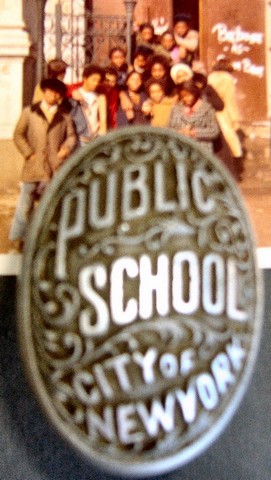|
Cybrary Man's Educational Web Sites
Before Class It was not easy but I tried to get almost every student involved in the class lessons. After a student makes a point in class ask another student what they felt about that studentís response. Building Community in the Classroom pageReturning Papers Quickly I made it a point to return any work the children did the next time I saw that class. I can vividly remembering students complaining about another teacher who took forever to return homework or test papers. I did not lose their papers because I used the homework folders that are explained in Cybrary Man's Homework System which can be found on: Cybrary Man's Homework System I also made sure that if there were any handouts in class that they were placed in the homework folder for that class. Foolproof Homework System After many years I refined my homework system to make it foolproof. No student could make the excuse that they could not do the homework because they did not understand the assignment. No child could say they did not know what the homework was. My Homework System is explained on Cybrary Man's Homework System Review of Week's Work My students enjoyed my Jeopardy game that was used to review the week's work. I made a large oak tag chart and used mailing envelopes in each column. The categories depended on what subject I was teaching. For my Language Arts classes I would have the following categories: Spelling, Vocabulary, Grammar, Literature, and Reading. For Social Studies I used: Geography, Current Events, Vocabulary, Week's Subject (2 Categories). Now you can do this with the tech version of Jeopardy. I found Jeopardy was also a good way to review for tests. See My Game Links here for online Jeopardy links. Calendars
Each week I posted a calendar of all of the special events that were happening in our school or the community. Getting Students to Proofread This taught my students to read over any paper they handed in and make the necessary corrections. Homework after I returned a graded test
Here Are My Best Organizatonal Tips: The BEST organizational thing I ever did was to start using grade slips. I got this from a 30-year vet. The SECOND best organizational thing I ever did was purchase the blue assignment collector at Calloway House's website. I actually purchased 4: One for each section of math that I taught, using each slot for a different day of the week. SAVED MY LIFE. I don't lose papers, and students can't steal others' papers to cheat or sabotage grades. So here's how my grading routine goes (I worked with 5th and 6th graders so the name-checking and responsibility helps may not apply or be appropriate for high school): 1. Take up completed assignment from the class, row by row. In the future I will require that EVERYONE turn in something. Students who do not have the work will sign a colorful half-sheet (that I have simply dated in pen) and write the assignment heading on it. (This is for parent conference, legal, etc. reasons so that it won't be a "I did it but my teacher lost it" situation. Also, in the school I worked at, sometimes it went better for you to just give the student another copy at that age level, and the colorful slip would help me keep up with who needed another copy. Sigh. I know.) 2. Have the student at the front of each row check to make sure all papers have names (Sigh. I know, but I had to choose my battles, and I decided to add this simple step rather than throw completed no-name papers away and deal with zeroes and parents). COUNT the number of submitted papers for that row before moving on to the next row. 3. Once all papers are collected, staple all student pages together with a grading slip on top (LIFESAVERS!: If you'd like a WORD copy [two slips per page], email me at zypowell @ yahoo.com [no spaces] with "REQUEST FOR GRADE SLIP" in the subject line.) 4. Personally place the stapled stack into my Calloway House blue assignment collector. 5. Retrieve stack when it's time to grade. Record grades on grade slip. Copy grades from grade slip to computer grading system (this goes SUPER fast when names are in the same order). Return graded stack to assignment collector, still stapled. 6. When it's time to return papers, REMOVE STAPLE in front of class, return papers and discuss if applicable, and continue with the day. Store physical copy of grading slip in a large plastic baggie labeled for that period and for that six weeks. This is a physical backup. (Because the grading slips hold one grade and all students, some teachers I've worked with then recorded the grades by hand into a physical gradebook for taking to parent conferences, so that all of a student's grades are collected on one page. I printed a paper copy of my computer gradebook.) I can't TELL you how relieved I was when I finally got this system down. Hope it helps! Zee P.S. While you are collecting papers, students are engaged in bellwork. JUL19 |





